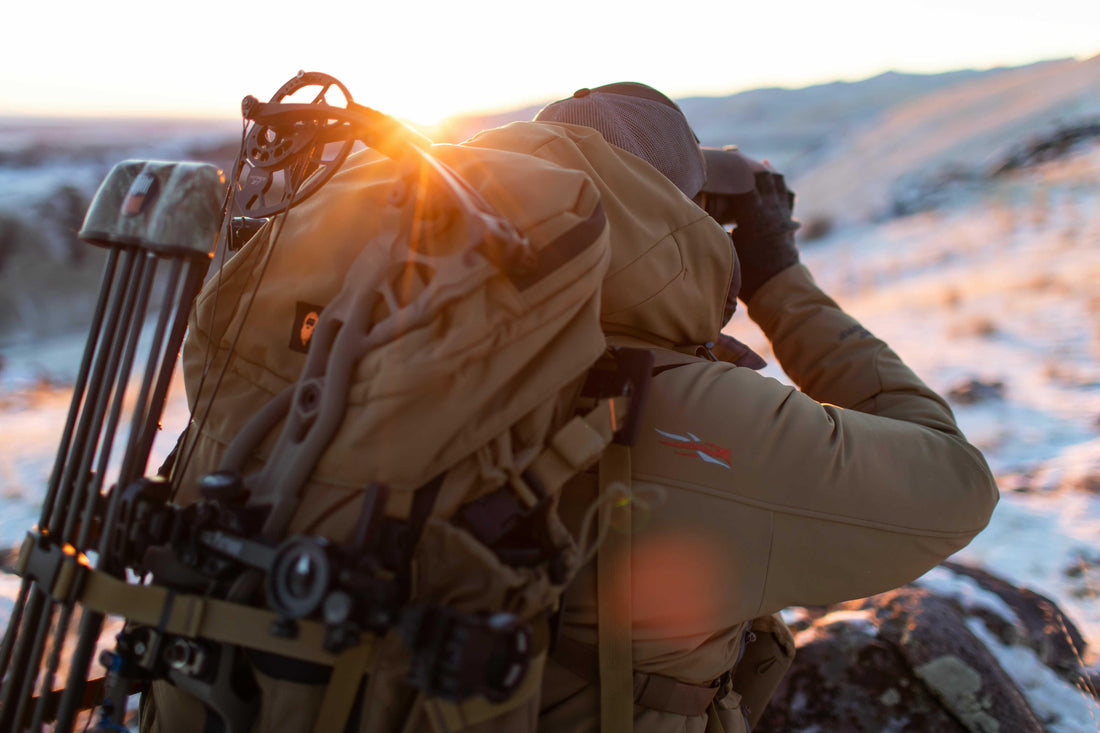
What Hunting Gear Do I Need?
Dennis StokesI know what you may be thinking, “This is too basic. I know this stuff.” Often times, the basics are easily overlooked, and just because you do it one way doesn’t mean you can’t garner ideas from someone else.
Allow me to lay out this scenario for you. It is October 10 and the opening of mule deer season in Southern Idaho. You’ve decided that you’re going to hunt out of a base camp situation with all its amenities, and you will rely on your motorcycle to take you deep into the backcountry daily for the 7 days you’ll be hunting. So, this requires a day pack situation to help haul what you need for the hunt as well as haul your game off the mountain if success finds its way to you.

Here is a list of what you’ll need to take:
Hunting Pack
Besides your boots and weapon, this is the most important piece of gear you’ll need. This is the foundation of gear as it is used to support (carry) everything else. You will also rely on your pack to help carry the bountiful harvest off the mountain as well. It needs to be comfortable for all day use carrying gear and be sturdy enough for the possible pack out. There is no need to have to go the 10 miles back to camp to grab your dad’s pack frame from the 1970’s. It should have an internal or external frame to support hauling heavy loads as well as a well-padded suspension system. Of this suspension system, the hip belt is the most important piece. This is where approximately 80% of the weight should go that you have in your pack. Shoulder straps are less important and should be comfortably padded and shaped so they don’t dig into your neck or shoulders. With minimal research, you’ll find there are plenty of options available. What about organization for gear? There are two approaches here.
1. Choose a pack with lots of pockets to keep gear organized and stored.
2. Choose a minimalist pack and organize with various gear bags of different sizes. (my recommendation)
The pack should have 1500-2000 cubic inches of storage ideally. Our current recommendation is the Initial Ascent Day Pack. It is supported by our Carbon Fiber Composite Integrous Frame and Suspension System. It contains 850 cubic inches of pockets between the lid and the outside storage pocket. Using an IA Dry Bag, it can hold another 1500 cubic inches buckled securely between the frame and the Pannier Load Carrier.
Kill Kit
This will be essential when you’ve made a well-placed, ethical shot on that mule deer buck, and he expires before he hits the ground. All of the required equipment should be kept in one organizational gear bag (i.e. IA Pack Sacks). See below:
- Tags/License (should always be with the kill kit or in a specific single pocket of your pack)
- Sharp Knife (either fixed or replaceable blades)
- 25 ft of paracord or more
- Rubber gloves
- Good quality, light-weight game bags (5)
- A contractor-sized garbage bag
- Wet wipes
Hunting Gear Essentials
These items are exactly that, essentials. You never go into the backcountry without them. The list below is a tip of the hat to the 1930’s and the origin of the Ten Essentials. The purpose is to answer two questions:
Can you respond positively to an accident or emergency?
Can you safely spend the night if needed?

- Navigation- paper topo map, BaseMap app on phone with preloaded maps of a 10 mile radius, Satellite communicator
- Headlamp w/ extra batteries
- First aid kit including blister care
- Fire Kit
-
- Waterproof Matches in small container
- Cotton balls soaked with petroleum jelly
- Rem Oil Wipes (great fire starter)
- Waterproof butane lighter
- The lightest multitool you can find
- Chapstick, Sunscreen, and sunglasses
- 1.5- 3-liter water bladder or 32 oz Nalgene water bottle
- Water filter (e.g. Sawyer) and iodine tablets (backup)
- Light, emergency bivy (e.g. Sol)
- Food- Bring enough for a full day if you eat breakfast in camp. If you don’t eat breakfast in camp, bring a day and a breakfast in case you have to spend the night
- Puffy jacket
- Light rain gear if weather calls for showers (keep handy at camp if not)
- Toilet Paper
Other Gear (to be carried)
- Tripod
- Spotting scope (optional)
- Weapon of choice plus ammo
- Wind checker
- Trekking Poles with duct tape wrapped on one and electrical tape on the other
- Butt pad or small rollup chair
Clothing Layering System
- Merino next-to-skin top and bottom (depending on temperature)
- Durable yet comfortable pants
- Merino Hoody
- Vest
- Jacket
- Gaiters
- Merino gloves
- Beanie
- Neck gaiter
- Good boots (essential)
We will get much more detailed on layering systems in another post. Layering is key when you're hunting consists of a good combination of hiking and sitting/glassing.
There are many options from which to choose when selecting the gear with which you will hunt. Do your research and just see what works for you. I do run my gear list on a spreadsheet, and yes, I do weigh each item so I know my total pack weight and how it’s made up. Also, other than the essentials, if I don’t use something two trips in a row, it comes off the gear list for the next trip.

1 comment
Gonna have to take a screenshot of this post and go shoopppingg! Hahaha